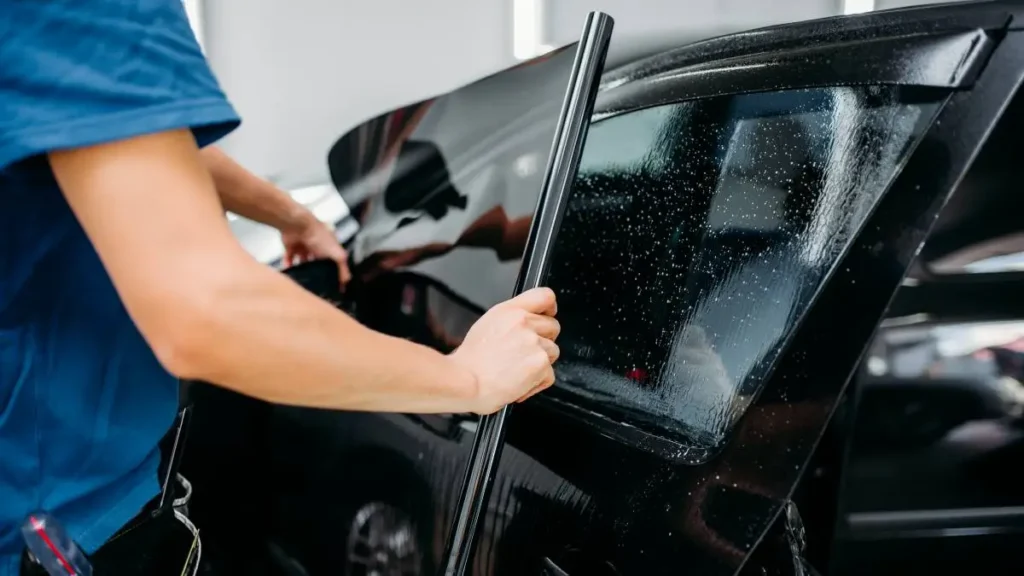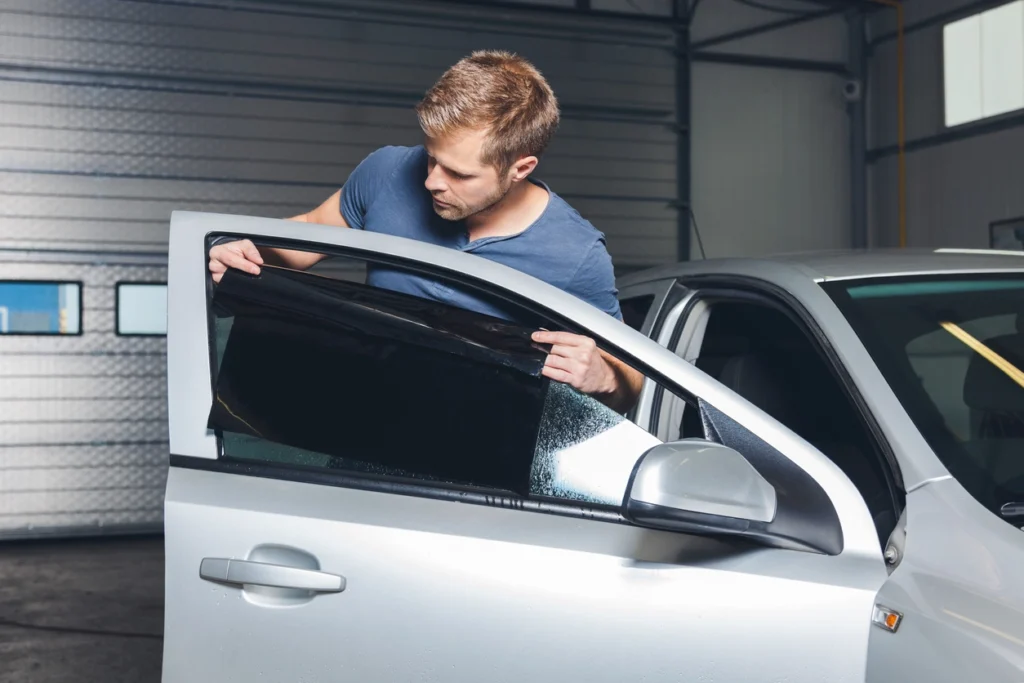How Much to Tint Car Windows: Factors to Consider
How much to tint car windows? Car window tinting is a process where a thin film is applied to the windows of a vehicle, typically for aesthetic, privacy, and safety reasons. This film can vary in darkness and material composition, offering different levels of UV protection, glare reduction, and heat rejection. The importance of knowing the cost to tint car windows lies in budget planning and making informed decisions. Understanding the expenses involved allows car owners to assess the affordability of the service and choose the appropriate tinting options based on their preferences and needs.
What is Car Window Tinting?
Car window tinting refers to the process of applying a thin, transparent film to the windows of a vehicle. This film is typically made of polyester and is coated with various materials to achieve different levels of darkness and heat rejection. The primary purpose of car window tinting is to provide several benefits to both the vehicle and its occupants.
Car window tinting serves several purposes, including:
Heat rejection: Tinted windows help block out a significant portion of the sun’s heat, keeping the interior of the vehicle cooler and reducing the need for excessive air conditioning.
UV protection: The film used in window tinting blocks harmful ultraviolet (UV) rays from entering the vehicle, which helps protect the occupants from UV-related health issues and prevents interior fading and damage.
Glare reduction: Tinted windows reduce glare from sunlight and headlights, improving visibility and safety while driving.
Privacy and security: Tinted windows provide privacy by reducing the visibility into the vehicle, discouraging potential theft and enhancing the comfort of the occupants.
Aesthetic enhancement: Window tinting can enhance the appearance of a vehicle by giving it a sleek and stylish look.
Benefits of tinting car windows:
Some key benefits of tinting car windows include:
Improved comfort: Tinted windows help maintain a comfortable temperature inside the vehicle by reducing heat buildup.
Protection: Tinted windows provide protection against UV rays, which can cause skin damage and interior fading.
Safety: Reduced glare and increased privacy contribute to safer driving conditions.
Energy efficiency: By reducing the need for air conditioning, tinted windows can improve the fuel efficiency of a vehicle.
Enhanced appearance: Tinted windows give vehicles a sleek and sophisticated look, enhancing their overall aesthetic appeal.
Different types of window tint films available:
There are several types of window tint films available, including:
Dyed film: This type of film is the most affordable option and provides basic heat and UV protection.
Metalized film: Metalized films contain metallic particles that reflect heat and UV rays, offering superior heat rejection and durability.
Carbon film: Carbon films are known for their high heat rejection properties and fade resistance, making them a popular choice for many drivers.
Ceramic film: Ceramic films use advanced ceramic particles to provide excellent heat rejection without interfering with electronic signals, making them ideal for vehicles with advanced technology features.
Factors Influencing the Cost of Tinting Car Windows

Size and type of vehicle: The larger the vehicle, the more window surface area there is to tint, leading to higher costs. Additionally, the type of vehicle can also affect the complexity of the tinting process. For example, cars with curved windows or multiple windows may require more labor and materials, thus increasing the overall cost.
Quality and type of tint film: Tint films come in various qualities and types, ranging from basic dyed films to high-performance ceramic films. Higher quality films often come with a higher price tag due to their enhanced durability, UV protection, and heat rejection properties. Additionally, specialized tints such as privacy or security films may also cost more than standard options.
Professional installation vs. DIY options: Opting for professional installation typically results in a higher upfront cost but ensures proper application and adherence to local tinting regulations. DIY tinting kits are cheaper but may lack the precision and expertise of professional installers, potentially leading to subpar results and additional costs for fixing mistakes.
Additional features such as UV protection and heat rejection: Tint films with added features like UV protection and heat rejection typically command a higher price. These features provide added benefits such as protecting occupants from harmful UV rays, reducing interior fading, and improving overall comfort by blocking out heat from the sun.
How Much to Tint Car Windows in Texas

Specific Considerations for Tinting Car Windows in Texas
When tinting car windows in Texas, there are several specific considerations to keep in mind to ensure compliance with state regulations and to achieve the desired results.
Texas Tint Laws: Understanding the legal tint limits and regulations in Texas is crucial. The state has specific laws regarding the darkness of tint that can be applied to different windows of a vehicle.
Quality of Tint Film: Choosing the right tint film is essential for both legal compliance and durability. Opting for high-quality tint films can ensure better heat rejection, UV protection, and longevity.
Professional Installation: While DIY tint kits are available, it’s advisable to have window tinting done by a professional. Professional installers have the expertise and tools to apply tint evenly and without bubbles or imperfections.
Type of Vehicle: The size and shape of the windows on different vehicles can affect the cost and difficulty of tinting. Larger windows or windows with complex curves may require more labor and materials, impacting the overall cost.
Additional Services: Some tint shops offer additional services such as removing old tint, applying ceramic coatings, or tinting other glass surfaces like sunroofs or headlights. These services can add to the overall cost but may provide additional benefits.
Legal Tint Limits and Regulations in Texas
Texas has specific regulations governing the darkness of tint that can be applied to vehicle windows. These regulations are designed to ensure visibility for both drivers and law enforcement while providing some level of privacy and protection from UV radiation. Here are the key points regarding tint limits in Texas:
Front Side Windows: In Texas, the front side windows must allow at least 25% of light to pass through. This means that the tint darkness level (measured as visible light transmission or VLT) must be 25% or higher.
Back Side Windows and Rear Window: There are no restrictions on the darkness of tint applied to the back side windows and rear window. However, it’s important to note that reflective tint is prohibited on all windows.
Windshield Tint Strip: A non-reflective tint strip may be applied along the top of the windshield, above the manufacturer’s AS-1 line. This strip must not extend more than five inches below the top of the windshield.
Enforcement: Law enforcement officers in Texas are equipped with tint meters to measure the darkness of tint on vehicle windows during traffic stops. Vehicles found to have illegal tint may be subject to fines and required to remove or adjust the tint.
Average Cost Range for Tinting Car Windows in Texas
The cost of tinting car windows in Texas can vary depending on several factors, including the type of vehicle, the quality of tint film, and additional services requested. However, the following average cost range can provide a rough estimate:
Basic Tinting: For a standard sedan or coupe with no additional services, the cost of tinting all windows to legal limits typically ranges from $100 to $300.
High-Quality Tinting: Opting for premium tint films with enhanced features such as heat rejection and UV protection can increase the cost. High-quality tinting for the same vehicle may range from $300 to $600 or more.
SUVs, Trucks, and Vans: Vehicles with larger windows, such as SUVs, trucks, and vans, generally cost more to tint due to the increased amount of material and labor required. Tinting for these vehicles may range from $200 to $500 or higher.
Additional Services: Services such as removing old tint, applying ceramic coatings, or tinting additional glass surfaces will incur additional costs. Prices for these services vary depending on the specific service and the size of the vehicle.
Professional Installation: While DIY tint kits are available at lower costs, professional installation ensures proper application and adherence to legal regulations. The expertise of professional installers typically justifies the higher cost. If you want professional services then Reliable Auto Glass is best in business.
Conclusion
Understanding the appropriate level of tinting for car windows is crucial for several reasons. Firstly, it directly impacts visibility, both during the day and at night. Excessive tinting can hinder the driver’s ability to see clearly, increasing the risk of accidents, particularly in low-light conditions. Secondly, legal regulations regarding window tinting vary by region, and exceeding these limits can result in fines or even vehicle inspection failures. Feel free to contact us for any type of services or query related to how much to tint car windows.
FAQs
What Factors Determine The Appropriate Level Of Tint For Car Windows?
Various factors, such as legal regulations, personal preference, visibility needs, and the type of vehicle, influence the ideal tint level.
Are There Legal Restrictions On How Much I Can Tint My Car Windows?
Yes, legal restrictions on window tinting vary by region. It’s essential to research and adhere to local laws to avoid fines or other penalties.
How Do I Know If The Tint Level I’ve Chosen Is Within Legal Limits?
Check with local authorities or consult legal resources online to determine the permissible tint levels for your area.
Can I Tint All Windows Of My Car Equally, Or Are There Restrictions On Specific Windows?
Regulations may specify different allowable tint levels for various windows, such as front, rear, or side windows. Be sure to follow these guidelines accordingly.
Will Darker Tint Provide Better Protection From Uv Rays And Heat?
While darker tint may offer increased UV protection and heat reduction, excessively dark tint can hinder visibility and may not comply with legal limits.
How Can I Strike A Balance Between Aesthetics And Functionality When Choosing A Tint Level?
Consider opting for a tint level that enhances the appearance of your vehicle while still providing adequate visibility and complying with legal requirements.

